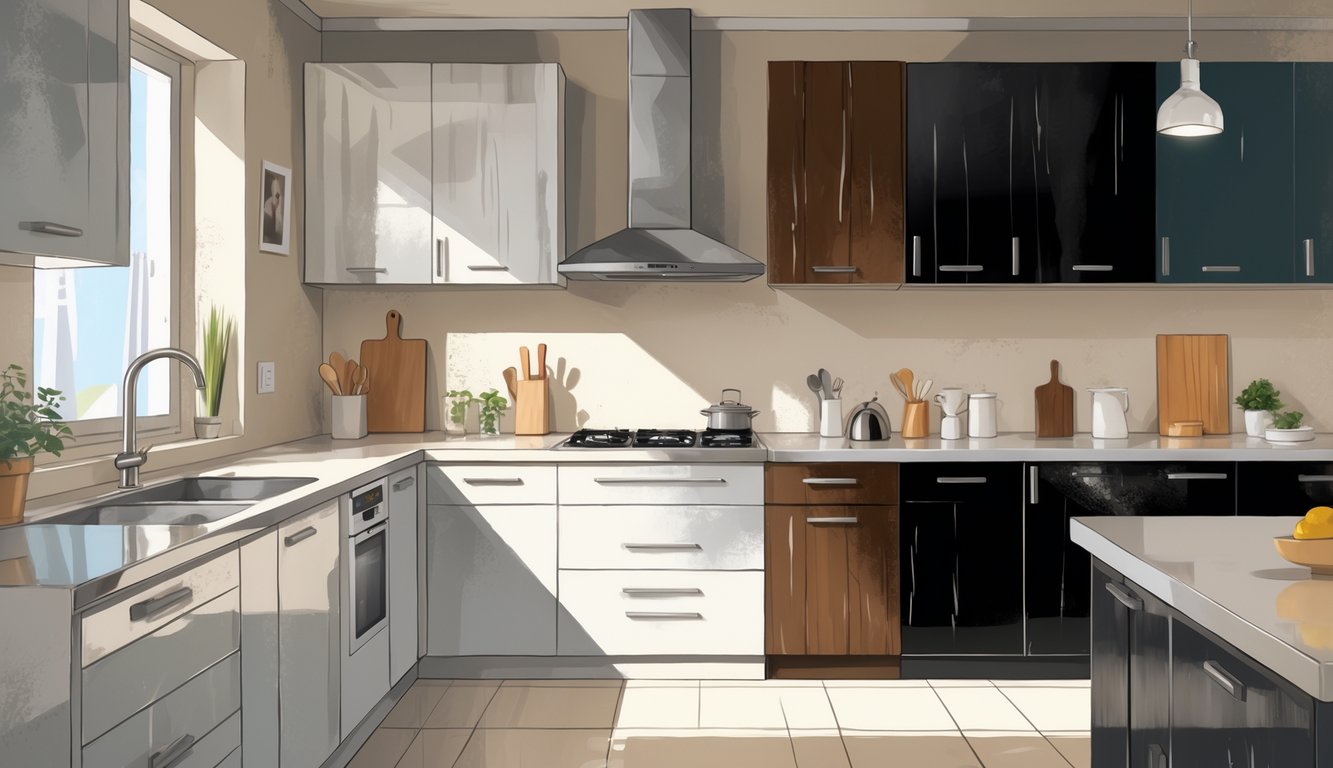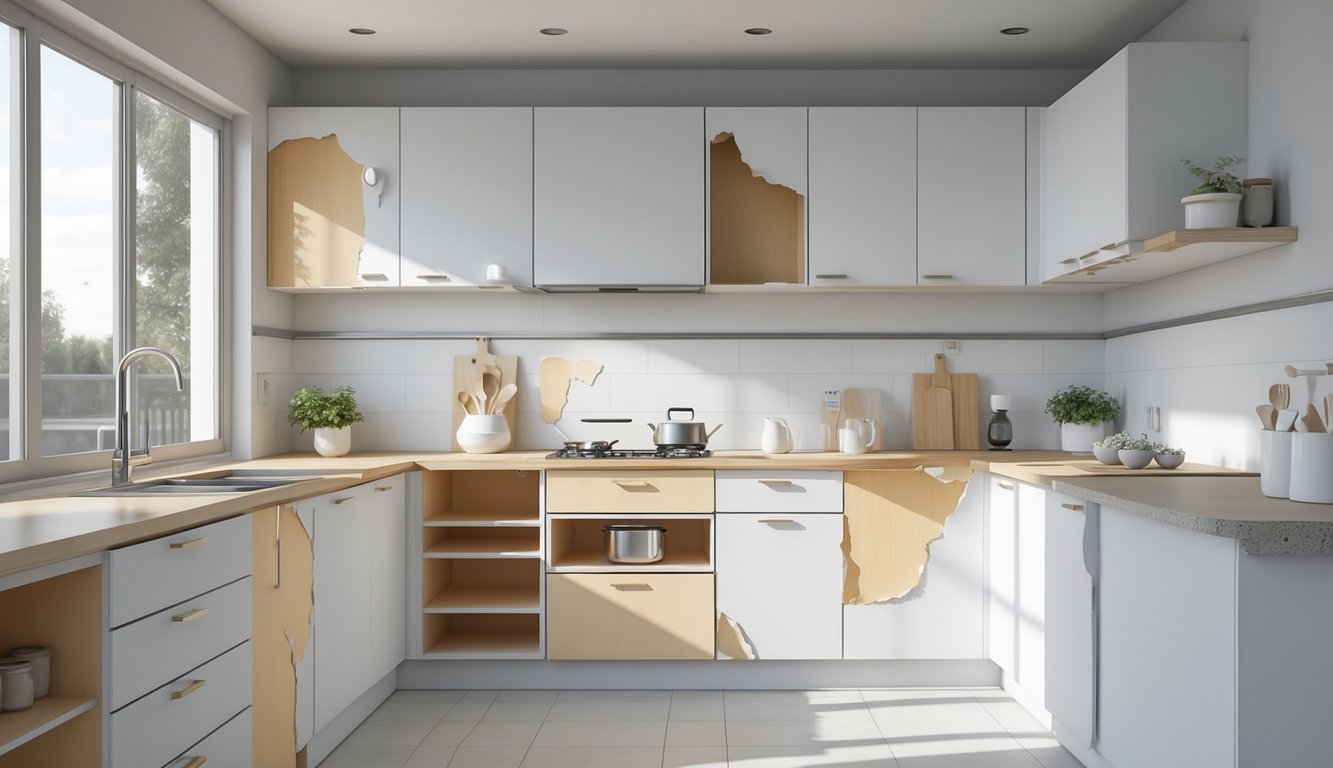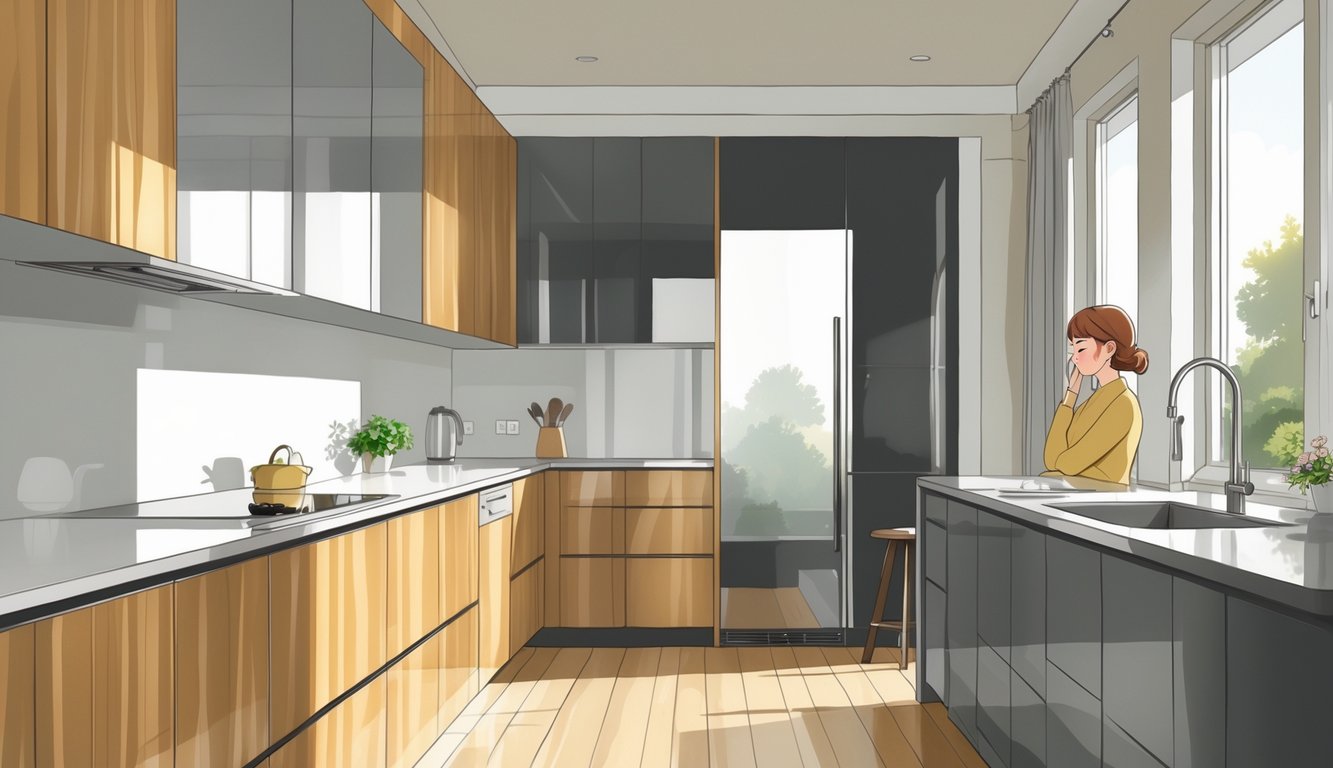
Lacquer and High-Gloss Finishes: Maintenance and Regret

Let’s talk about lacquer and high-gloss. Everyone at the showroom acts like it’s the “modern upgrade” of the century. But real life? Not even close. Sure, they look wild next to matte, but all that shine means you’re basically inviting fingerprints and repair bills into your daily routine.
Scratch and Smudge Problems
First time I saw my high-gloss cabinets in daylight, I almost blinded myself. Not exaggerating. Within two weeks, every surface had fingerprints, streaks, and these tiny scratches that only I notice but now can’t unsee. They claim lacquer “protects” the wood, but honestly, it just makes every smudge visible from across the room. I don’t even cook that much, but somehow, these things look dirtier than my old unfinished pine.
Industry folks are pretty blunt about it: high-gloss cabinet finishes show every mark. Some even suggest keeping a microfiber cloth in your pocket at all times. Is that normal? Matte hides grime, gloss amplifies it. Got kids or pets? Good luck. I stopped counting cleaning sessions after the first month.
Difficulties With Repairs
Repairs are a joke. Chipped lacquer? Don’t bother. I bought every “cabinet repair kit” out there—none worked. My neighbor, who actually builds cabinets, warned me: lacquer’s a nightmare to fix because the patch never blends. It’s even worse with colored high-gloss. If you want that perfect, seamless look, you’re looking at a full respray or professional recoating. And it happens more than you’d think—belt buckle, chair arm, whatever, next thing you know, the glossy layer is peeling at the edge. DIY? Nope. Even pros admit most “quick fixes” just make it worse (kitchen finish guides online).
Drop a spoon, get a dent and a scuff that refuses to fade. Tried to hide a scratch with a marker—looked fine until the sun hit it. Then, disaster. Fixing it means color-matching, spraying, waiting for it to dry—just for a tiny spot. Matte paint would’ve laughed it off. Sometimes I wonder if I’m cleaning cabinets or auditioning for a home reno show. Spoiler: I’m not.
Thermofoil and Laminate Cabinets: Durability Concerns

Slammed a drawer shut, found a chip by the edge—brand new cabinets, six months old. Thermofoil and laminate? Not as tough as they claim. Whenever I see brands hyping “moisture resistance,” I just laugh. They don’t mention the random bubbling around the dishwasher, or the weird peeling corners.
Peeling and Warping Issues
That seamless thermofoil layer? Total illusion. I watched mine start curling at the corners just because a kettle sat nearby. My neighbor said the sales brochure promised “no peeling if you wipe spills up quickly”—how quick is quick, exactly? Because after a year, water finds a way. Edges go from perfect to frayed in no time.
Laminate’s no saint, either. They say it’s durable, but the “high-traffic edge chips” warning is real. A cabinet maker told me pre-made laminate doors warp less than thermofoil, but chip faster at handles—nobody cleans those right. More layers, more chances for something to peel or bubble. Even regular kitchen humidity is enough to start the process, never mind a soup spill.
Heat and Moisture Vulnerability
One time, my toaster oven sat a little crooked, and the “heat shield” did nothing—the door above sagged, and a bubble formed under the vinyl. Never went back to normal. Supposedly, “thermofoil is a durable vinyl laminate used to mimic painted cabinets”—but if you put it near anything hot or steamy, it’s toast (see Kitchen Cabinet Kings on thermofoil durability).
Even so-called moisture-resistant laminate is only as strong as its seams. Water sneaks into the MDF, and then it’s game over. Sure, you can wipe spills right away, but sometimes you blink and new bubbles pop up overnight. Nobody warns you how bad steam is for these finishes. If laminate costs almost as much as mid-range paint, I’d rather deal with a few scratches than watch my cabinets melt next to the coffee maker.
Veneer and Matte Finishes: Style Versus Substance

Showroom displays with perfect matte or glossy veneer always suck me in—until those cabinets land in my actual kitchen. Real life is messy. Veneers misbehave, matte panels collect fingerprints, and there’s always some weird spot behind the toaster that nobody warned me about.
Edge Peeling and Delamination
Who thought wood veneer was “practical”? Honestly, after a year of normal use—opening, closing, sticky hands—the veneer edges start curling up like old tape. Seen it at friends’ houses too: lean a platter down, and suddenly a corner’s peeling. Installers and industry guides all admit most veneer cabinets are just engineered wood with a thin layer glued on. The second steam, heat, or a tiny spill hits the seam, things get weird.
I paid extra for “moisture-resistant” finishes, but the glue still lets go or the panel puffs near the dishwasher. Even the best adhesives lose to gravity and humidity. Carpenters keep telling me to watch for bubbling and delamination near sinks. Repairs? Never satisfying. Always a seam, a mismatch, or a sticky patch that collects every crumb. Pro tip: don’t put heavy steam under your wall units unless you want to re-veneer in a year or two.
Staining and Cleaning Challenges
Nobody warned me about the fingerprints. Matte finish sounded smart—no blinding shine—but every greasy fingerprint, oil smudge, or random drip just soaks in. Cleaning guides suggest gentle, pH-neutral cleaners, but let’s be honest: life is pizza sauce at midnight. Remodeling experts admit matte hides little scratches, but the stains stick around, especially on lower cabinets. Scrub too hard and you’ll dull the finish or make shiny spots; now I’m tiptoeing around my own kitchen like it’s a museum. Got kids or dogs? Don’t bother. If you don’t love cleaning, skip the “low-luster, easy-going” sales pitch. Here’s what I’ve tracked personally:
| Finish | Smudge Visibility | Stain Removal Effort |
|---|---|---|
| Matte | High | Annoyingly Difficult |
| Veneer (Glossy) | Medium | Easy with right product |
Some finishes just aren’t made for daily chaos. Wish I’d listened when my contractor said matte is for showrooms, not soup kitchens.